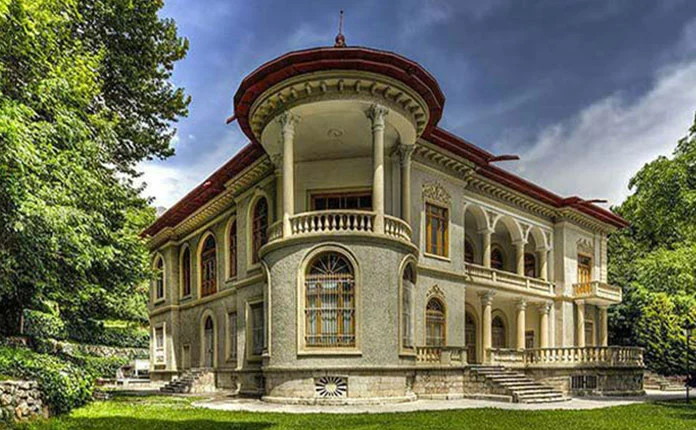If you are interested in visiting historical places, the historical and cultural complex of SaadAbad is one of the most prominent sites in Iran’s contemporary history. The last kings of Iran during the Qajar and Pahlavi periods lived in the Sa’dabad palace complex. Visiting the SaadAbad collection can provide you with interesting insights into the contemporary history of Iran.
The SaadAbad palaces are nestled in the midst of a garden teeming with trees and greenery, and taking a stroll through the beautiful nature of this garden is truly pleasurable. If you haven’t yet visited the SaadAbad Palace complex or if you wish to revisit this complex along with its palaces and museums, follow along with this article. In it, we provide you with complete and necessary information for visiting the historical and cultural complex of Sa’dabad.
Going to this palace is one of the best things you can do in Tehran.
Introducing Sa’dabad Palace
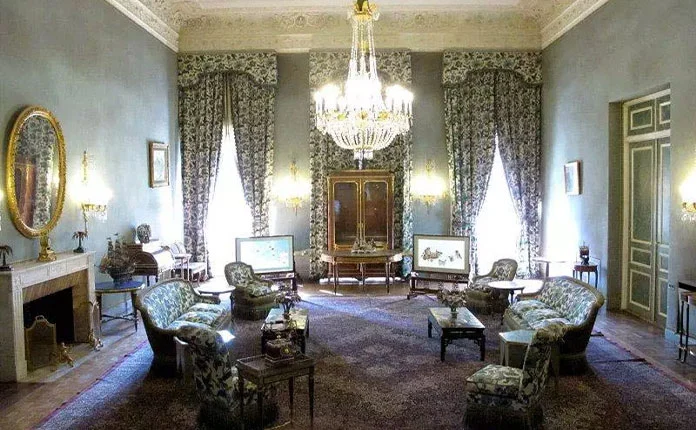
The historical and cultural complex of Sa’dabad Palace in Tehran served as one of the summer residences for the Qajar and Pahlavi kings. The SaadAbad palace complex stands as one of the three beautiful and historical palace complexes in the Shemiranat area of Tehran, where the last kings of Iran resided.
In the past, the SaadAbad Palace complex was adorned with gardens, including one filled with trees. The exclusive palace within the SaadAbad complex serves as its main structure, and over time, Reza Khan expanded the number of palaces and buildings within the complex. The palaces constructed within the SaadAbad complex were originally intended for the family members of Reza Shah Pahlavi. The last palace added to the SaadAbad complex belonged to Leila Pahlavi, the youngest daughter of Mohammad Reza Shah.
History of SaadAbad Palace
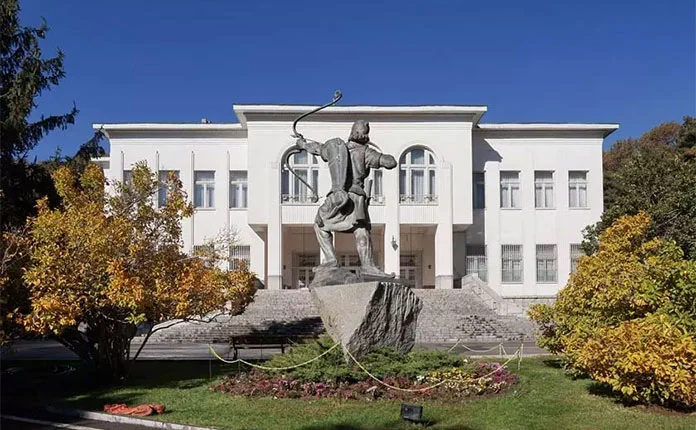
The construction of SaadAbad Palace began during the Qajar era. Following the coup of 1299 by Reza Khan, when the Pahlavi dynasty ascended to power, the buildings within the SaadAbad complex were constructed and renovated under Reza Khan’s orders. Portions of the SaadAbad complex lay beyond its original boundaries when Reza Khan assumed power; however, they were purchased by Reza Shah and incorporated into the SaadAbad complex.
The initial buildings within the SaadAbad complex occupied an area of 8,000 square meters, with the Queen Mother Palace being among the first structures established. Today, the SaadAbad collection stands as the largest historical collection remaining from the Pahlavi and Qajar periods in Tehran.
Where is Saad Abad Palace in Tehran?
The SaadAbad Palace complex is situated in the northernmost part of Tehran, nestled on the foothills of Tochal. Historically, the area surrounding the SaadAbad complex boasted some of the finest villas in Tehran, overlooking the lush valley of Darband and characterized by a gentle breeze and abundant tree-covered landscapes. However, urban development has expanded over time, and today, the SaadAbad Palace complex finds itself within the city limits. In the past, the palace resided amidst gardens beyond the city’s boundaries.
The SaadAbad Palace complex is bordered by the northern areas of Niavaran to the east, Velenjak to the west, and Tajrish to the south. To the north of the complex lies the majestic Tochal mountain, part of the Alborz mountain range. During the reigns of the Qajar and Pahlavi dynasties, the Sa’dabad Palace complex served as the summer residence for the kings.
Architecture of Saadabad Palace
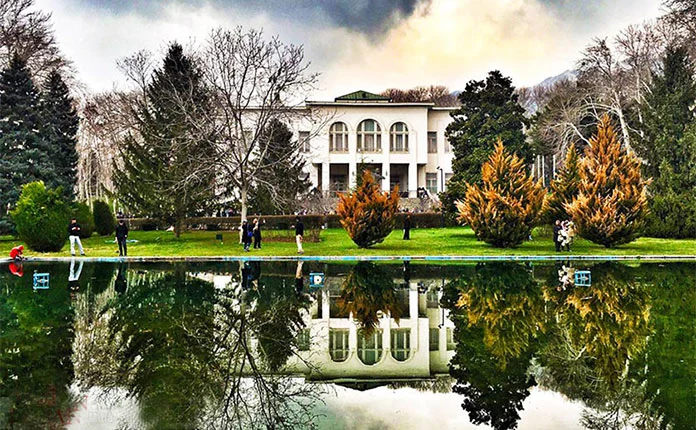
This palace, like the Niavaran palace, has historical grandeur and is very unique in terms of architecture. This complex occupies an area of 300 hectares, with approximately 110 hectares dedicated to mansions and palaces, and around 180 hectares allocated to gardens, aqueducts, and greenhouses within the Saad Abad complex. The construction of the mansions and palaces within the Saad Abad complex reflects a blend of European architecture with authentic Iranian architectural styles, with designs crafted by prominent domestic and foreign engineers.
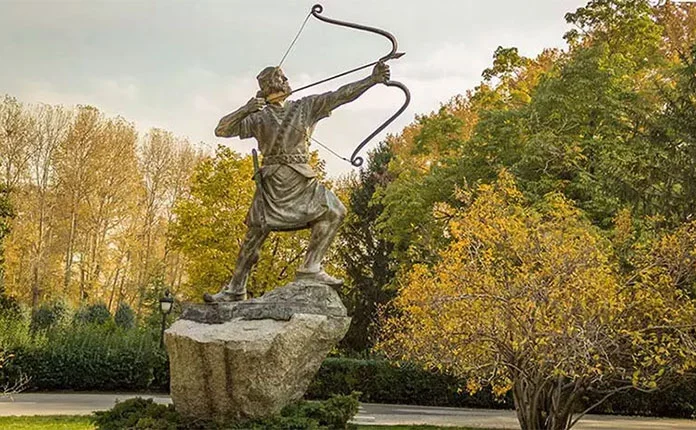
The White House within the Saad Abad complex was designed by engineers Khorsandi and Boris Rossi. Plastering and interior decorations were executed by Hermandan Irani, Gholamreza Pahlavan, Abdul Karim Sheikhan, Hossein Kashi, Ostad Larzadeh, and Reza Malakeh. At the entrance of the White House, four columns in the Roman architectural style flank the main facade, which is adorned with marble stones.
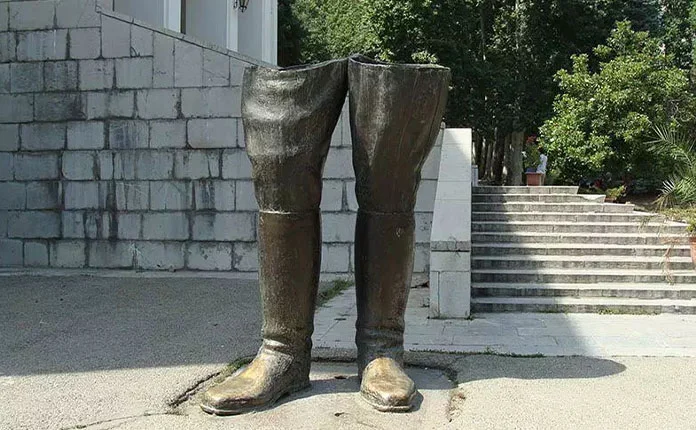
In front of the White House stands the statue of Reza Khan’s boots, originally situated in a square in Dezful city before being relocated to the Saad Abad complex. Additionally, the sculpture of Arash Kamangir, created by the renowned sculptor Ustad Arjang, graces the Saad Abad Garden and stands in front of the White House.
Mirza Jafar Kashi, known as Memar Bashi, was the architect of the Sabz Palace. Construction of the Green Palace, also known as the Marble Palace, spanned nearly seven years and involved prominent Iranian artists and architects. They utilized green stones from the Khamse Zanjan mine and Khorasan marble to create a stunning facade.
The interior of the Green Palace features intricate mirrors, tiling, and plasterwork. Master Hossein Behzad oversaw the gilding of the palace walls, while students of Master Sani Khatam contributed to the inlay work. Reza Pahlavi’s bedroom overlooks Darband from the mirror hall of the Green Palace.
Among other notable architectural structures in the Saad Abad Palace complex is the Shams Palace. Construction of the Shams Palace, located in the northwest of the Saad Abad complex, lasted from 1314 to 1318. The palace, spanning 2600 square meters across two floors and a basement, displays elements of European and traditional Iranian architecture.
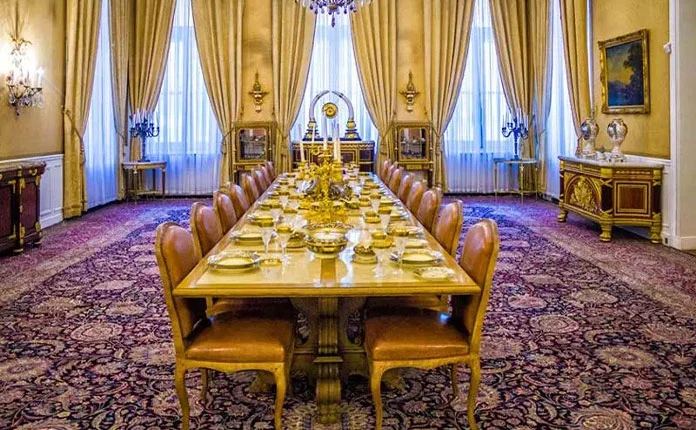
Ashraf Pahlavi Palace, covering an area of 1800 square meters in the east of Saad Abad Garden, was commissioned by Reza Shah and constructed by Farmanfarmaian. In 1350, Ashraf Pahlavi ordered the exterior of the palace to be clad in marble. Various buildings within the Saad Abad complex date back to the Qajar and Pahlavi periods, undergoing restoration during the second Pahlavi era, with works by Iranian artists adorning the corners of the palace complex.
palaces of SaadAbad complex
After the Islamic Revolution of Iran, the various palaces within the historical and cultural complex of Saad Abad underwent changes, with many being converted into museums. The SaadAbad complex comprises 18 main buildings, encompassing both small and large palaces, which serve various purposes. Some buildings house multiple museums, while others are utilized for administrative or presidential institutions. In this section, we will introduce the different palaces and museums within the SaadAbad complex.
Ahmed Shahi Palace
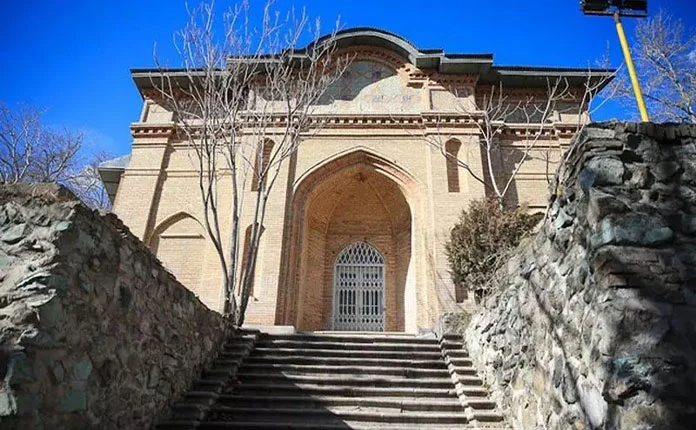
Ahmad Shahi Palace is one of the oldest buildings in the Saad Abad complex. As its name suggests, this palace was constructed during the reign of Ahmad Shah Qajar. However, its construction was completed during the reign of Pahlavi I, when Reza Khan came to power. Currently, due to ongoing restoration and reconstruction efforts at Ahmad Shahi Palace, it is not possible to visit this historical site. After the restoration of Ahmad Shahi Palace is complete, it will be reopened to the public.
Shahvand Palace
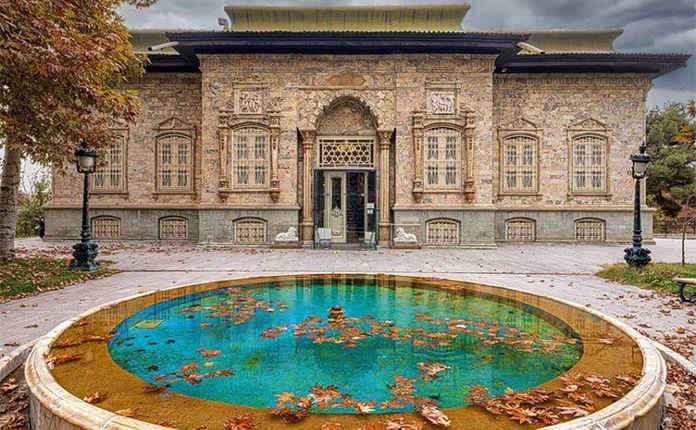
Shahvand Palace, also known as the Green Palace due to its architecture, is situated in the northwestern part of the historical and cultural complex of Saad Abad. Originally, during Reza Khan’s Ministry of War in the first Pahlavi period, Shahvand Palace served as a summer cottage for Reza Shah.
Initially, Shahvand Palace was a partially built structure under private ownership and stood outside the royal palaces. Later, Reza Khan acquired this unfinished building and replaced it with Shahvand Palace. The construction of the Green Palace was completed during Reza Shah’s reign.
Following reconstruction and restoration efforts, the building came to be known as Shahvand Palace. After the revolution, it was referred to as the Green Palace. The ground floor of Sabz Palace served as the residence and office of Reza Shah Pahlavi, while the basement functioned as the Shah’s warehouse.
Notable historical items within the palace include a luxurious dining furniture set, exquisite china, ceramic and Italian silverware, a 70-meter Mashhad carpet, a hand-embroidered sofa from the Qajar era, a French desk positioned in the hall, and a Fam silver curtain. The hall features woodwork adorned with inlaid curtains. Furniture from the Louis XVI era of France and two consul tables from the time of Napoleon Bonaparte also grace the palace.
The White palace (White house)
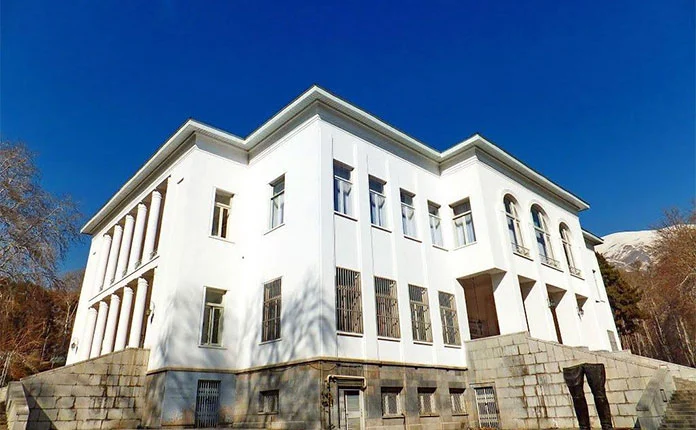
The White palace, as its name suggests, boasts a white appearance. It is considered the largest palace in the Saad Abad complex and served as the summer residence of Mohammad Reza Shah Pahlavi and his wife, Farah. Construction of the White palace began in 1310 under the orders of Reza Shah and continued for five years.
Mohammad Reza Shah Pahlavi’s office was situated within the White house, where administrative and ceremonial court affairs were conducted. Among the most prominent features of the White palace are the large oil paintings by master Hossein Behzad and his students. Visitors to this palace can also admire exquisite Iranian carpets, historical pottery, precious crystals, European chandeliers and lamps, and a desk that once belonged to Marie Antoinette, the former queen of France.
SaadAbad palace
SaadAbad Palace is one of the areas inaccessible to the general public. This palace within the SaadAbad historical complex is currently under the jurisdiction of the presidential institution. Previously, the Natural History Museum was housed in the exclusive SaadAbad Palace; however, its purpose changed upon transfer to the presidential institution. SaadAbad Palace is situated to the west of the Museum of Fine Arts.
The Black Palace
The Black Palace is situated at the southern end of the Saad Abad historical complex. It stands out as one of the most beautiful palaces within the Saad Abad complex. From 1346 to 1357, the Black Palace served as the residence of the court minister. Its name derives from the use of black marble stones in the palace’s exterior. In 1361, the Black Palace was inaugurated as the Museum of Fine Arts.
The building of Shams Pahlavi Palace is situated on the northwest side of the Saad Abad complex. Today, it houses a comprehensive museum of human evolution. Additionally, Farah Diba’s royal garments are displayed in a section of this palace known as the Royal Clothing Museum.
Ashraf Pahlavi Palace
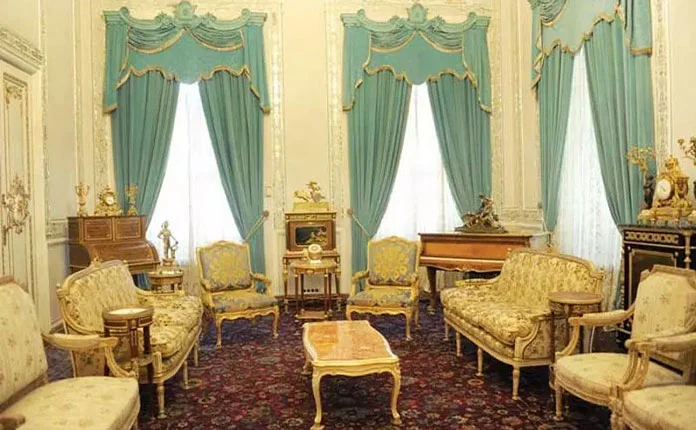
Ashraf Pahlavi Palace, located in the east of the historical and cultural complex of Saad Abad, has now been transformed into a museum of royal dishes. Initially opened in 1372, the museum of royal dishes was transferred to the presidential institution two years later. However, it was subsequently returned to the Cultural Heritage Organization in 2004. Presently, this museum showcases handicrafts and royal dishes related to the Pahlavi and Qajar periods, along with dishes donated to Mohammad Reza Shah and Farah Pahlavi from around the world.
Queen Mother Palace
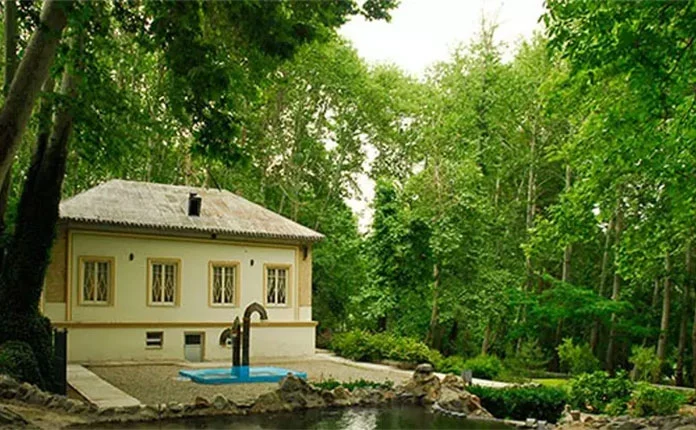
Queen Mother Palace During the latter years of Reza Shah Pahlavi’s reign, the Queen Mother’s palace served as his residence. Originally built by order of Reza Khan for Taj Al-Muluk, the mother of Reza Khan, this palace is currently under the administration of the presidential institution and is used to host foreign government guests. Today, the Queen Mother Palace is referred to as the President’s Building.
Bahman Palace
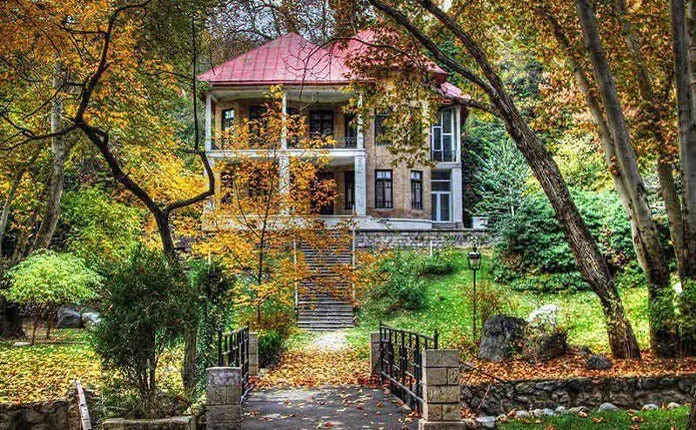
Bahman Palace, constructed during Mohammad Reza Shah’s reign in the second Pahlavi period, stands as one of the most magnificent buildings in the Saad Abad complex. It was the residence of the Shah’s nephew and the son of Gholamreza Pahlavi. Currently, Bahman Palace serves as the administrative center of the Saad Abad complex. Situated adjacent to the Museum of Anthropology on the north side of Saad Abad Garden and near the north gate of the Saad Abad Complex.
Shahram Palace
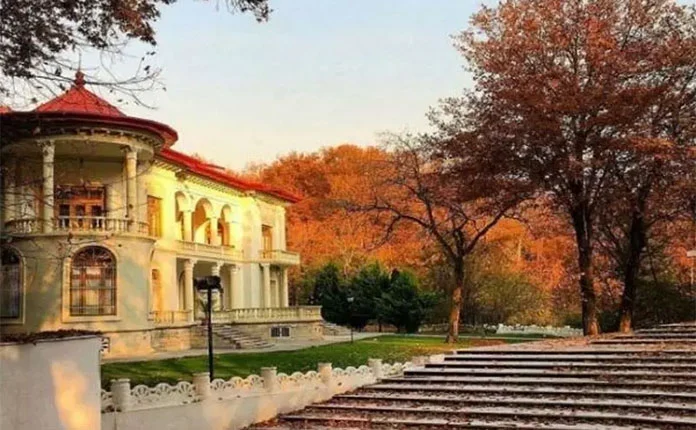
Shahram Palace has been repurposed as a military museum and is located in the center of the Saad Abad complex. Initially constructed in 1314 by the order of Reza Shah Pahlavi for his second wife, Taj al-Muluk, the original building underwent complete renovation between 1351 and 1352 and was bestowed upon Shahram, the son of Ashraf Pahlavi. In 1362, the palace was inaugurated as the Military Museum.
Palace of Queen Esmat Dolatshahi
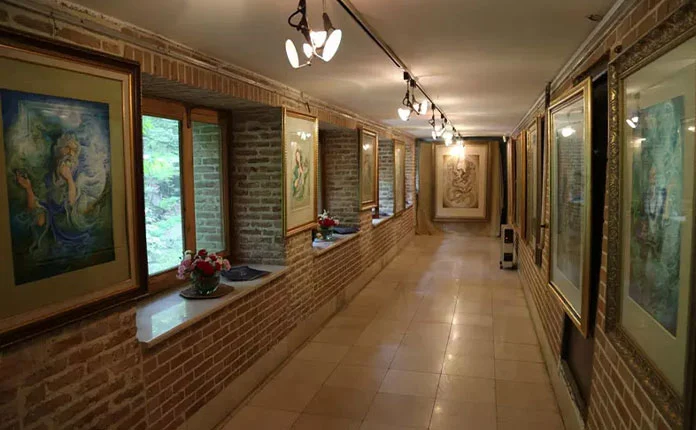
Situated in the center of the Saad Abad complex, this palace now serves as the venue for displaying the remarkable works of Iran’s master of miniatures, Master Farshchian. During Reza Shah’s era, Esmat Dolatshahi, his fourth wife, resided in this palace. Later, during the second Pahlavi period, after housing Mohammad Reza Shah’s brother and his personal head cook, the building was repurposed as a warehouse. The Master Farshchian Museum opened in 1380, showcasing over 70 beautiful works of Master Farshchian in five halls.
Old Palace of the Crown Prince (Karbas Palace)
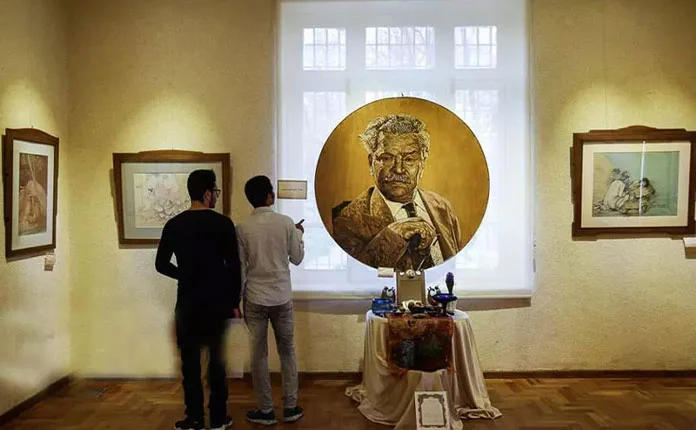
Also known as Karbas Palace, this structure initially served as Reza Shah Pahlavi’s workplace and retreat. However, during the reign of Pahlavi II, Reza Pahlavi, the grandson of Reza Khan, utilized Karbas Palace, thus earning it the name Crown Palace. Following the Iranian Revolution, the Royal Palace underwent reconstruction and restoration. In 1373, on the 100th anniversary of Ostad Behzad’s birth, the Karbas Palace reopened as the Ostad Behzad Museum. Presently, the museum’s basement functions as a school and an art exhibition.
Farhanaz and Alireza Palace
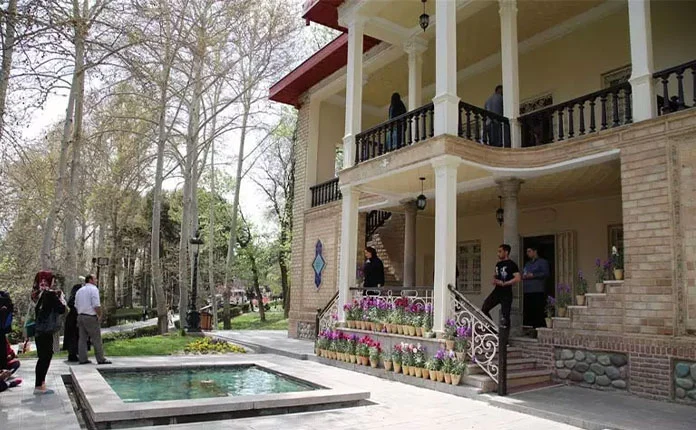
Located in the central part of the Saad Abad complex, this palace was once home to two of Mohammadreza Shah Pahlavi’s children, Farhanaz and Alireza. After the revolution, the palace was repurposed, and in 1376, the Mir Emad Calligraphy Museum, dedicated to the renowned Iranian calligraphy artist, opened within its walls.
Farah Pahlavi Palace
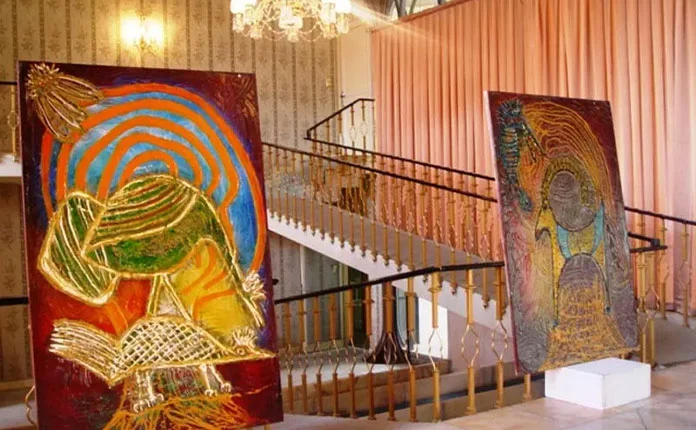
Situated at the northernmost point of the Saad Abad complex, this palace boasts beautiful and unique architecture. Since 2005, it has hosted various exhibitions of traditional clothing. Additionally, it has become a venue for other art exhibitions, including oil and acrylic canvas exhibitions and various painting works. Consequently, the palace is now known as Negarestan Museum, featuring works by prominent artists such as Reza Samadi, Mina Qavidel, Nader Yasemi, Mostafa Basimi, Tahereh Chizari, and Khalil Tawai Hamidi.
Palace of Queen Turan AmirSoleimani
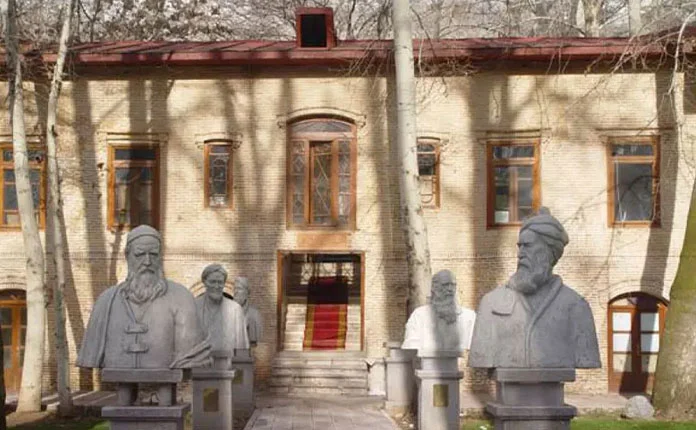
Originally dating back to the Qajar era, the Palace of Queen Turan underwent reconstruction and restoration ordered by Reza Khan after the completion of the Green Palace. While the outer part once served as the residence of Reza Shah’s fourth wife, Queen Esmat, the inner part belonged to Queen Turan, Reza Shah Pahlavi’s third wife. Presently, the outer section houses the Master Farshchian Museum, while the inner part serves as the museum of enduring faces within the Saad Abad collection.
Laila Palace
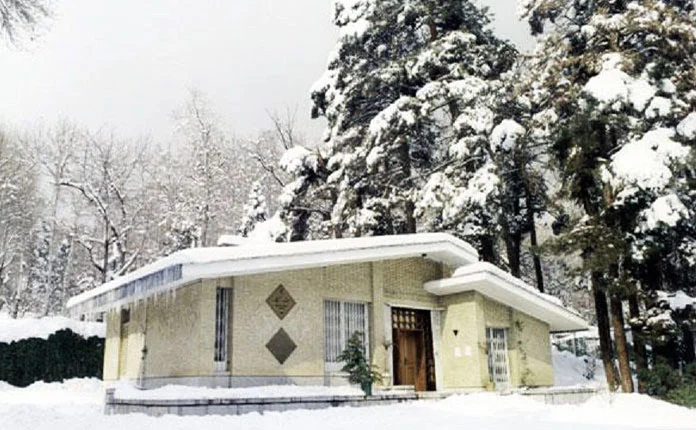
Located in the center of the Saad Abad complex in Tehran, Laila Palace stands as the final palace erected within the complex. In 1373, the master Abkar Miniature Museum was inaugurated within the Leila Palace on World Museum Day, showcasing the works of Master Abkar, including various paintings.
Note: This complex also has three other palaces named: green Palace, Shams Palace and water Museum.
The aqueducts of Saad Abad Palace
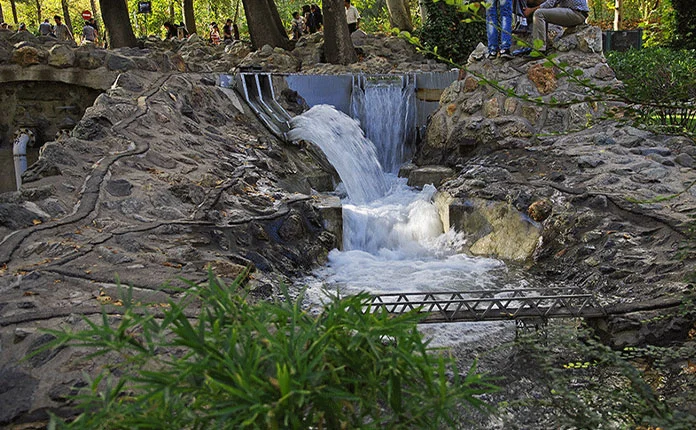
In the past, the Darband River used to flow through SaadAbad Garden, contributing significantly to the lushness of the Darband and Shemiran area. However, as the number of trees and plants in the Saad Abad garden increased during the first Pahlavi period, the necessity of constructing aqueducts to irrigate the trees became evident. Consequently, twelve series of aqueducts were excavated in various parts of the Saad Abad garden area, ensuring the longevity and verdancy of the garden trees. These aqueducts remain intact within the Saad Abad garden to this day.
